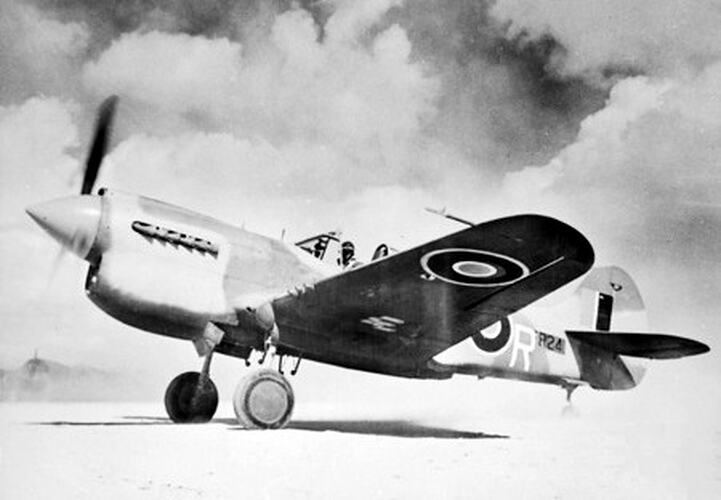Developed in the US from the radial-engine Curtiss P-36 fighter, the first P-40 version with an inline, liquid-cooled Allison V-1710 engine flew in October 1938. A large order for the USAAC soon followed as well as a 230 aircraft order from France to equip the depleted Armée de l'Air. None of these aircraft reached France before the German attack in May 1940 and subsequent defeat of France. The French order was taken on by the British for the Royal Air Force which caused some initial problems as the aircraft were fitted with metric instrumentation, the British used imperial, and a throttle which operated in the opposite way to British service aircraft.
Although not suitable for operations over Europe, the Tomahawk I as the RAF named the P-40B, soon equipped fighter squadrons in the Western Desert and became the mainstay of the RAF fighter force in North Africa between 1941 and 1943. Many Australians flew the Tomahawk and Kittyhawk (P-40E, K & N) in this theatre with the RAF. Two RAAF squadrons (3 & 450) were also equipped with the type. Both of these RAAF squadrons later flew the Kittyhawk in Italy.
In Australia, the war with Japan from December 1941 exposed an almost total absence of modern fighter aircraft and hurried orders for Kittyhawks were placed in the US via the British Purchasing Commission. The first machines which arrived in early 1942 came directly from American stocks and were soon in action in New Guinea with 77 Squadron RAAF defending Port Moresby. A small unit (33rd Pursuit Squadron) of American P-40's led by Major Floyd 'Slugger' Pell comprised the only air defence over Darwin on 19 February 1942 during the first Japanese air raid where all ten aircraft were lost and Pell was killed. The US Camp Pell in Royal Park, Melbourne was later named in his honour. The P-40 equipped USAAF 49th Fighter Group was the main air defence for Darwin for most of 1942.
RAAF Kittyhawks were decisive in the defeat of the Japanese landing force at Milne Bay in September 1942. Operating from an airfield almost on the front line, 75 & 76 Squadrons destroyed the Japanese landing barges, attacked targets on the ground as well as provided air defence against Japanese aircraft. The RAAF continued to use the Kittyhawk as its primary fighter and fighter-bomber in the South-West Pacific Area until 1945. A number of units were re-equipping with Mustang aircraft when the war ended in August 1945. No. 2 Operational Training Unit at Mildura, Victoria was the main RAAF fighter training unit and many Kittyhawks were operated there. Most surviving Kittyhawks were scrapped but a small number have been restored and flown in Australia since the 1980's.
More Information
-
Keywords
-
Localities
United States of America, Australia, England, United Kingdom
-
Authors
-
Article types

